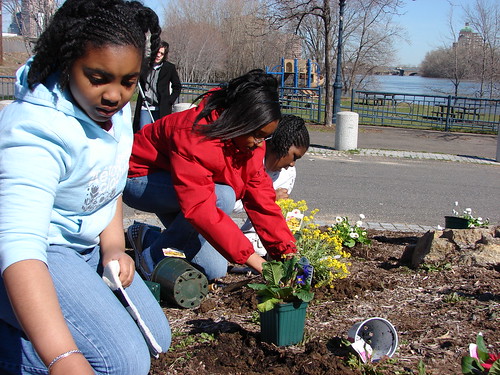 by Debs GardnerIn June, Marina Espinoza and I carried out a two day training in Honolulu, HI on the Multicultural Youth Leadership curriculum (which you can find here). The first day, the participants, representatives from youth organizations all over Hawaii, experienced all the activities of the curriculum hands-on, while reflecting on how to facilitate these activities with youth. The second day was a training-of-trainers session, in which participants learned how to train other adults to use the curriculum, which would make continuation of the curriculum sustainable after we left town.
by Debs GardnerIn June, Marina Espinoza and I carried out a two day training in Honolulu, HI on the Multicultural Youth Leadership curriculum (which you can find here). The first day, the participants, representatives from youth organizations all over Hawaii, experienced all the activities of the curriculum hands-on, while reflecting on how to facilitate these activities with youth. The second day was a training-of-trainers session, in which participants learned how to train other adults to use the curriculum, which would make continuation of the curriculum sustainable after we left town.Both days were well-received, and sparked lively discussion. The topic of multicultural youth leadership is hot in Hawaii, an extraordinarily diverse state where youth from countless cultural backgrounds live close together. Much of the training’s conversations reverted back to specific concerns, like the Polynesian and Micronesian kids not getting along.
One participant shared that the youth in his program have finally come to a cultural understanding when they’re participating in program activities, getting along and acting like friends, but still fight when they’re out and about. He was dejected, understandably. It’s so rewarding to help youth take a significant step - learning to work together, to see how divisions are disempowering, to find common ground - and so defeating to feel like all that work gets lost.
Yet, this challenge is part of why youth leadership programs matter. True, it’s disheartening for the youth and adults both when youth are able to connect within a program but still revert back to conflict outside. But it’s also very real and honest - and reality is, obviously, a basis for true learning. Change is incremental. Progress that youth make within a shared space like an afterschool or summer program isn’t progress lost.
The trick is to engage the youth in frank conversation and reflection about the discrepancy between where they do and do not get along, to help them set boundaries, and to let them develop solutions. Practice dealing with the complex realities of conflict resolution gives youth more preparation than frankly most adults have in breaking down barriers to working together. Conflict, cross-cultural communication, oppression, ethnicity, identity, and alienation are not always easy topics to touch, but youth are by and large less afraid of going there than adults are.
And what’s the alternative? Leadership programs that don’t address culture and conflict, leaving youth alienated and feeling unwelcome? Failing to prepare youth not just for the world they will someday inherit but the world in which they already own a share?
Time matters, and this is why longer-term programs or overnight summer camps make ideal soil for growing youth leaders. Given enough time, youth will feel ownership of and connection to a strong program, a group of peers, a way of being. Give youth time, resources, decision-making power, dialogue, and activities that engage them, and youth will find a solution even where adults won’t. Then, let these youth teach what they’ve learned to their younger peers. Leadership begins here.










